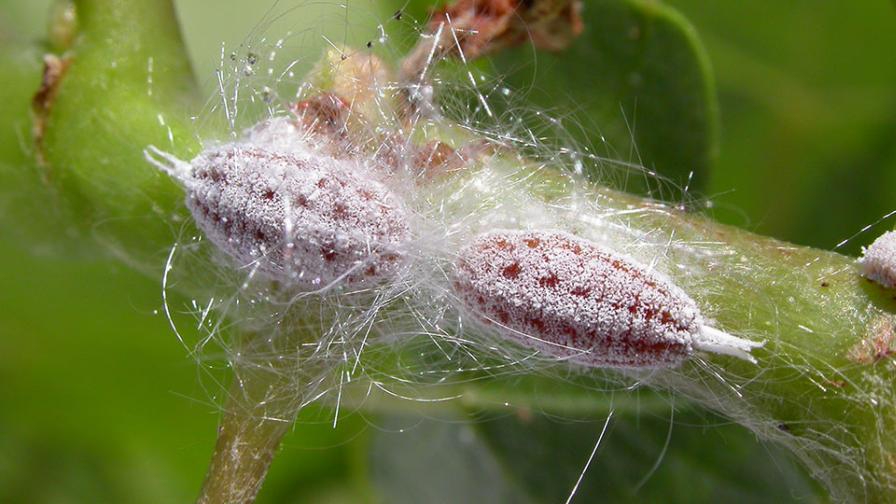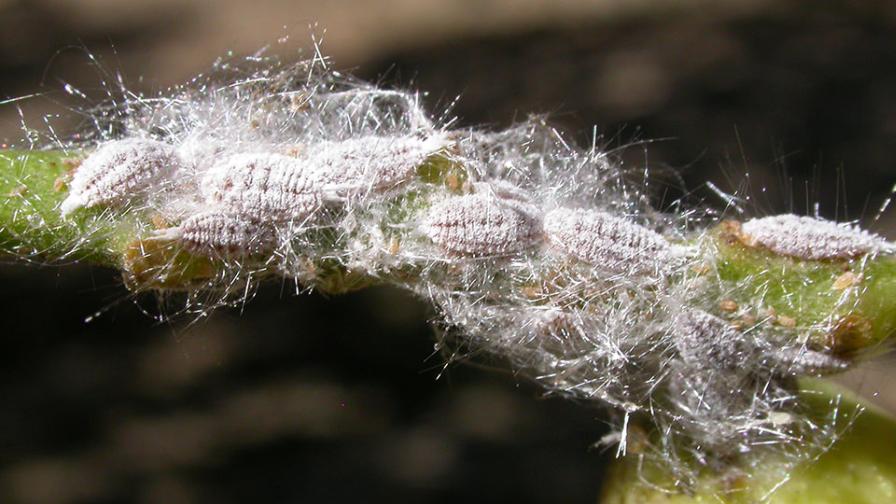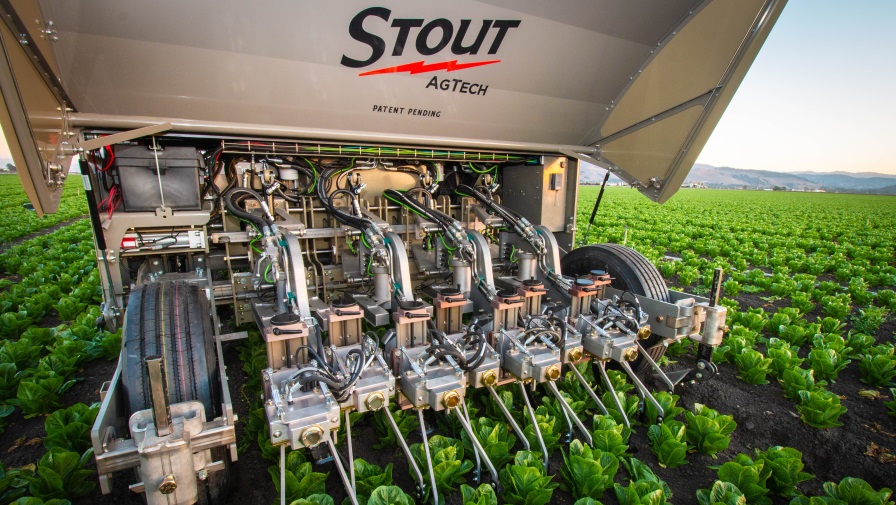New Approach for Pistachio Growers To Wrangle Gill’s Mealybug

Gill’s mealybug adult females.
Photo by David R. Haviland, courtesy of University of California Statewide IPM Program
Gill’s mealybug first caught the attention of pistachio growers in the early 2000s. Soon after, David Haviland, on behalf of the California Pistachio Commission, began researching this new two-tailed version of the mealybug, leading to the 2005-2007 development of management practices.
“The only literature on this species at that time was the one that defined it as a new species,” Haviland recalls. “We came in pretty much knowing nothing.”
Since then, those same management practices have remained gospel.
“That’s now more than 15 years ago,” Haviland says. “They are still very applicable. At the same time there is some revisiting that needs to be done on this topic.”
TWO SPRAYS VS. ONE
That reassessment is being facilitated by a familiar face — Haviland. The Farm Advisor with the University of California Division of Agriculture and Natural Resources (UC ANR) detailed current chemical options against Gill’s mealybug while presenting at the annual UC Statewide Pistachio Day conference.
The biggest change moving forward downplays the previously recommended “one-and-done” spray strategy — the practice of using one insecticide at one timing, historically the last week of May, when crawlers are at peak emergence.
The call for modification is illustrated in a 2019 insecticide trial cited by Haviland. Six chemicals, while each having significantly reduced mealybug density on Aug. 13, left behind more than 100 live mealybugs per cluster.
“I don’t think there’s anyone listening to my talk who would say that having over 100 mealybugs per cluster after an insecticide application in the middle of August is acceptable. Absolutely it’s not,” Haviland says. “Every one of those 100 mealybugs — pretty much all females — is each going to produce 100 or more crawlers at harvest. When you add up the number of clusters, you’re talking a million mealybugs — I don’t even know what the number is — in each tree at harvest.”
In response, some growers will now have to consider two spray programs, Haviland says. But at what times of the season?
A 2021 trial conducted by Haviland looked at three timings (May, July, and a May/July combination) and three types of products (standards, new products, and microbials/biologicals). Results of the following groupings were:
Conventional products, single spray in May: Seven products — Movento (spirotetramat, Bayer CropScience), Senstar (pyriproxyfen/spirotetramat, Valent), Assail (acetamiprid, United Phosphorus), KFD-567-01 (experimental version of Assail), Sequoia (sulfoxaflor, Corteva Agriscience), Sivanto (flupyradifurone, Bayer Crop Science), and Imidan (phosmet, Gowan) — all performed well.
A one-time application of Sefina (afidopyropen, BASF) did nothing against mealybugs, Haviland says, but a 2x rate of the insecticide did well. “Currently you can’t use Sefina at twice the legal amount … (but) the manufacturer is aware of these data, so they’re revisiting the pistachio label for mealybug to see what they can do to up the rate to make that product something you can use.”
Microbial and biological products in May or May/July: With a focus on Aza-Direct (Azadirachtin, Gowan) and Venerate (Burkholderia spp, Marrone Bio Innovations), the conventional Movento (May) upheld its status as the “best product out there,” Haviland says.
Aza-Direct (May), Venerate (May), and the combination of Aza-Direct (May) and Venerate (July) could not match Movento’s success, as expected, although all three programs did significantly reduce the number of mealybugs in the 60-80% reduction range. “Glad to see that,” Haviland says. “We’ve got some options there for organic pistachios.”
Single vs. combo treatments of standards: Assail and Sequoia both did very well in July. For growers looking at two-spray programs, Movento (May)/Assail (July) and Movento (May)/Sequoia (July) both looked very good, Haviland says.

Gill’s mealybug colony feeding on pistachio rachis.
Photo by David R. Haviland, courtesy of University of California Statewide IPM Program
EARLY, LATE TIMINGS
An upcoming second trial conducted by Haviland will look at other timings, including postharvest.
“I’m going to guess that, if you do a postharvest treatment, you can kill half or more of the mealybugs, but more than 99% die on their own in the winter,” Haviland says. “So even if you killed half of them, you’re going to go from 99% control to 99.5% control when you take into account overwinter mortality. I can’t imagine there’s a return on investment. Nevertheless, we’re looking at it.”
March experiments will also be included. “Some growers tried this last year — March looked good — as well as some chemical company trials, so we’ll continue that,” Haviland says. “We’ll also be looking at some combo sprays. We’ve got about 30 different treatments in this year’s trial.”
Export Cautions
Centaur (buprofezin, Nichino) should not be used in May by growers who plan to export to the European Union (EU), Haviland says. “The EU has a default tolerance, and there’s lots of data showing that if you apply that product in May, you will exceed that tolerance,” Haviland says. “If you know a field is not going to the EU, Centaur is a great product. Please keep it in the mix. If you are going to the EU, you either need to avoid Centaur or consider using it at a March timing, which the manufacturer is actually promoting.”
In 2021 multiple EU rejections involved crops that had been treated in 2020 with Admire (Imidacloprid, Bayer CropScience). Most of that involved late-season foliar applications, Haviland says. Of note, the maximum residue level (MRL) at that time was 0.05 parts per million. That number has since been dropped to 0.01.
Last year the Administrative Committee for Pistachios (ACP) established guidelines that stated: 1) no foliar applications of Admire in 2021; 2) if applied to the soil in 2020, do not use in 2021, and; 3) if applied to the soil in 2021, do it before May 15.
ACP guidelines for 2022 are pending, Haviland says. “Please talk to your huller,” he adds.










